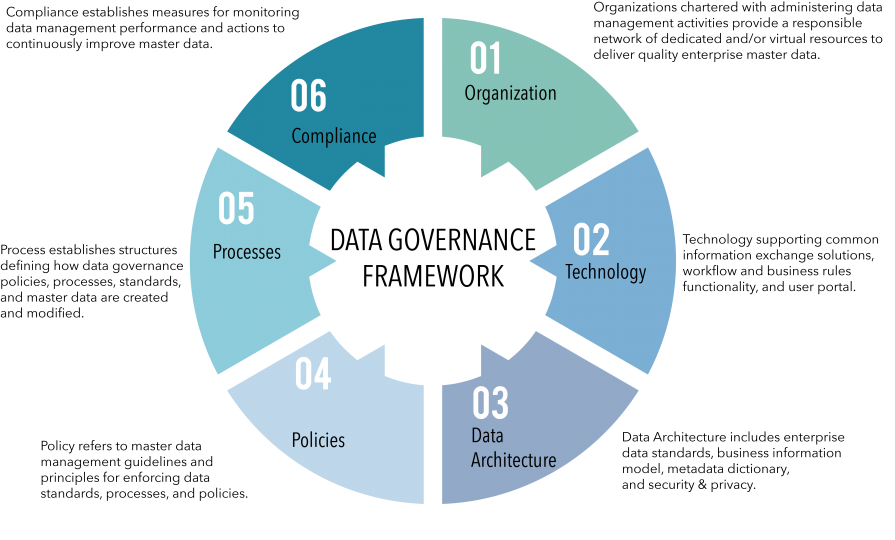Why It’s Important to Use a Formal Data Governance Framework
Why It’s Important to Use a Formal Data Governance Framework
What is a data governance framework?
A formal data governance framework brings together different IT and business stakeholders to define the rules that govern data management across the organization. It is the infrastructure that makes data governance possible and maintains data integrity, quality, and security.
A formal data governance framework touches every part of the data management process, including the technology and data architecture as well as the policies and processes that govern how data is created, used, retained, and secured. The framework also establishes measures for monitoring how data is managed and how regulatory compliance requirements are met.
Think of a data governance framework as the foundation for creating rules around data management, ensuring that those rules are followed, and establishing processes for dealing with non-compliance, ambiguities, and issues.

The Benefits of a Data Governance Framework for Federal Agencies
Data is a top priority for the public sector and a strategic asset. Through data analytics and data visualization, agencies can manipulate and explore their data, discover patterns and connections, and answer new questions. Then, through data sharing, they can streamline operations, reach consensus across organizations, and improve outcomes. Ultimately, data analytics enables real world results so government agencies are better positioned to scale and address rapidly evolving crises like the COVID-19 pandemic and or helping communities heal after being affected by the opioid epidemic.
But these insights and the decisions they inform are only as valid and precise as the data on which they’re based. If the quality of the underlying data is “dirty” – meaning it’s inaccurate, incomplete, or inconsistent – then any value that can be derived from it is constrained and effective decision making is diminished. This is where data governance comes into play.
How does an organization get started with a data governance framework?
Any data governance framework implementation begins with an assessment of the organizations’ data maturity. This involves an understanding of what data assets exist, where data is located – on-premises and/or in the cloud – and what processes, procedures, and standards are in place for data handling, management, security, and so on.
Agencies must also consider the key drivers for data governance and the pain points they’re seeking to address. These typically center around four key areas:
- A common data standard: All data that is collected, stored, and reported must “speak the same language.” Data governance can help achieve this by defining data rules definitions for each element, so they are consistent and data integrity is enforced.
- Data interoperability: For effective data analysis, there must be seamless, secure, and controlled exchange of information between applications. As the data begins to flow across connected systems and stakeholders, a governance process is essential to keeping the data ownership and structure in place.
- Data access and usage: As access to data increases and the volume of data requests grows, data governance can help ensure that data is used and shared appropriately.
- Data security and privacy: A formal data governance framework enhances data security and privacy and helps agencies meet their compliance obligations.
The good news is that these are highly aligned with data governance. The key is to execute a sustainable framework that establishes a structure and resolution for these challenges. Key stakeholders in this process include CIO, CISO, Chief Digital Officer, information owners, data steward, application steward, and analytics steward.
Start small, then scale for success
The most difficult part of building a data governance framework is getting started, especially when many organizations and datasets are involved. The key to success is to focus on the important areas of the mission that agencies struggle with today. With this as their starting point, they can build a framework that helps them overcome these pain points – then scale from there.
The good news is that they don’t need to start from scratch. Many aspects of data governance are typically already in place. A formal data governance framework brings them all together to drive technology enablement and continuous improvement.

